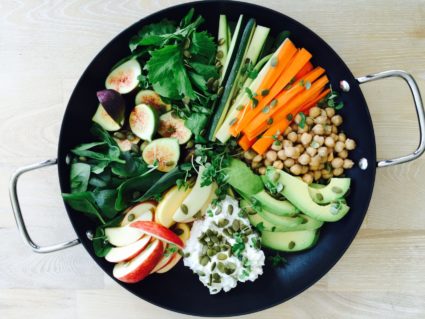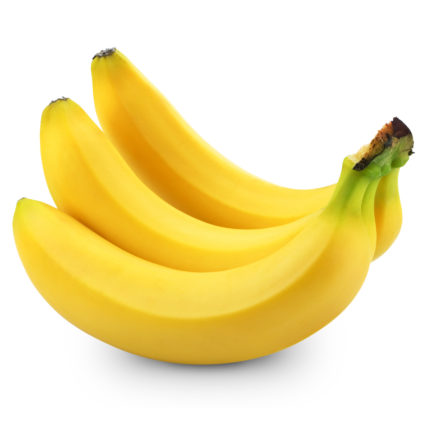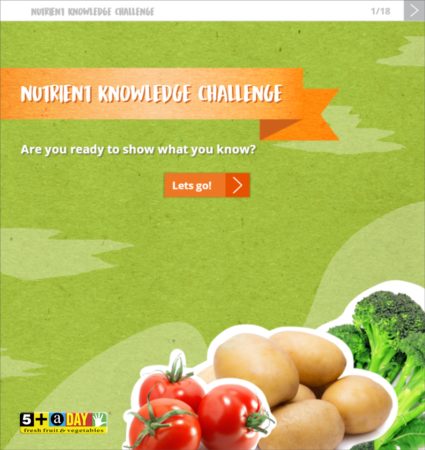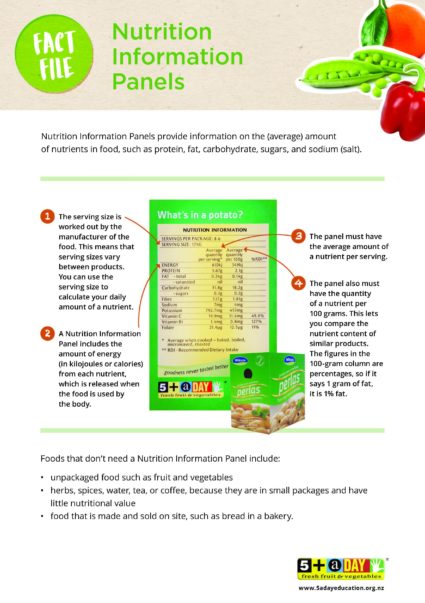Learning Opportunity 4: How do manufacturers and producers tell us about the nutritional value of food?
In this learning opportunity, students will explore the way manufacturers and producers provide information about the nutritional value of food, especially fruit and vegetables. They will undertake an inquiry of their choice to broaden their knowledge and delve more deeply into the messages producers can give around the health benefits of the nutrients in fruit and vegetables.

Learning Intentions

Students will:
- discuss the ways nutritional information is conveyed
- investigate the different messages conveyed about the nutritional value in fruit and vegetables
- explore health claims about specific fruit and vegetables
- evaluate current issues and theories of nutrition, identify and reflect on factors that influence people’s choices and behaviours, and use this knowledge to make informed decisions
Possible Achievement Objectives
Health and Physical Education: Level 5
PERSONAL GROWTH AND DEVELOPMENT
Students will:
- describe physical, social, emotional, and intellectual processes of growth and relate these to features of adolescent development and effective self-management strategies
Science: Level 5
LIFE PROCESSES
Students will:
- identify the key structural features and functions involved in the life processes of all plants and animals
Preparation
Materials
For this and other lessons, there is a range of resources to use to prepare for the topic and, where appropriate, to share with students.
- Know your Nutrition Information Panels - Animation: Before the lesson, work through the animation, so you are familiar with the interactivity and the content, and decide what technology you’ll use to engage the students (for example, an IWB).
- Fact File: Nutrition Information Panels
Key Vocabulary
During this learning opportunity, key terms are used. Click on an underlined word to view a definition. You can define and explore these terms in context as you discuss this topic with your students.
The Learning Opportunity
This learning opportunity contains suggestions for helping students understand the ways we can find out about the nutritional value of foods and the kinds of messages manufacturers can give. You can adapt the approach and activities as needed to support your students as they carry out their inquiries. Your role is to help your students generate rich questions about the topic of nutritional information and messaging, rather than simply providing them with information.
Note: As a part of every learning opportunity, you can reinforce the message that eating 5+ A Day fresh fruit and vegetables is an important part of making healthy lifestyle choices.
If your students did not take part in the Nutrient Knowledge Challenge during Learning Opportunity 1, they could do it now (click on the image to download and play). If laptops or tablets are available, this can be done in pairs or small groups. Or to involve the whole class, this can be done collaboratively using an IWB. It’s important that you familiarise yourself with this activity prior to taking it with the class. It involves interactivity to engage students in their exploration.
Begin by reviewing Learning Opportunity 3 – How can we make sure we get as many nutrients as possible from fresh fruit and vegetables? For example, you could ask:
- What do we know about the best ways to store different fruit and vegetables to preserve their nutritional value?
- What are the best ways to prepare or eat fruit and vegetables to preserve their nutritional value?
All about nutrition information packaging
Tell students that this learning opportunity will focus on how manufacturers and producers tell us about the nutritional value of food.
Ask:
- How do we know what nutrients are in food? (Hopefully, students will mention Nutrition Information Panels, which are on most packaged foods.)
- What information does a Nutrition Information Panel give? Let’s find out.
Know your Nutrition Information Panels - Animation
Make sure that you familiarise yourself with the Know your Nutrition Information Panels animation before showing it to the class. Together, watch the animation (using an IWB), which shows the information provided in a Nutrition Information Panel, so consumers know what nutrients they’re consuming when they eat a particular food.
Nutrition Information Panels
To reinforce the information in the animation, you could also get students to view the Fact File: Nutrition Information Panels (click on the image to enlarge and download), as a class on an overhead projector, in pairs on devices, or using a printed version.
Discuss what students learned from the animation and/or the fact file.
Ask:
- Was there anything you didn’t understand?
- What did you discover that was new?
- What would you like to know more about?
Write students’ questions in a ‘parking lot’ on the board. Discuss how to read a Nutrition Information Panel and make sure students have a good understanding of the difference between a serving size and per 100 grams.
Fruit and vegetable Nutrition Information Panels
Next, generate a discussion around food that doesn’t require a Nutrition Information Panel such as fruit or vegetables. Ask:
- How do we find out about the nutrients in food like fruit and vegetables?
An obvious answer is that you could Google this information. However it’s often difficult to tell whether online information is accurate or valid, so it’s best to use reputable sources such as Plant & Food Research’s Food Composition database or information about fruit and vegetables from 5+ A Day, which provides Nutrition Information Panels on fruit and vegetables.
Have students work in pairs or small groups to find out about the nutritional content of fruit and vegetables, using the Food Composition database or 5+ A Day. They can choose some fruit and vegetables, then read the NIP for each one to find out about the nutrients it contains and the amount. Ask student to analyse the NIPs and use the figures to compare the nutritional content of different fruit and vegetables.
- What did you find out?
- What did you learn?
- What surprised you?

Messages about nutrients and their benefits
Now, tell students:
- We’ve looked at the ways nutrients are used by our bodies. Did you know that there are rules and regulations about what you can and can’t say about the benefits of different foods?
Doctor Carolyn Lister is a Principal Scientist at Plant & Food Research, where she leads a team who looks at the composition of foods (mainly fruit and vegetables) to understand what is in those foods and their health benefits.

Interview with Carolyn Lister
Q. What does your work focus on?
A. Some of our work focuses on nutrients that have well-established health benefits. We’re also just beginning to unlock what phytonutrients are, how they may be good for us, and how much we may need to eat.
Our work is wide-ranging, from helping plant breeders to develop crops higher in nutrients and food companies to develop new food products, which may have greater health benefits.
Q. What the rules around the claims you can make about the health benefits of nutrients?
A. Food Standards Australia New Zealand (FSANZ) sets the rules in New Zealand and Australia about what can be claimed for foods. There are two types of claim – nutrient content claims and health claims.
Q. What is a nutrient content claim?
A. An example of a nutrient content claim is 'Broccoli is a good source of vitamin C.' The regulations say how much of each nutrient has to be in a standard serve of that food to make a claim.
Q. What is a health claim?
A. Companies can use pre-approved health claims if their food has a sufficient amount of a nutrient. So you can say that vitamin C supports a healthy immune system, but you can’t say that vitamin C treats or cures the common cold.
Some companies have gathered evidence to make new health claims on their products. For example, Zespri can make the claim that Zespri® Green Kiwifruit can contribute to normal bowel function.
To make a health claim, a company must also show that the food is healthy and doesn’t contain too much energy, fat, sugar, and/or salt. So a bag of potato chips might be able to make a nutrient content claim, but it can’t make a health claim. For more information, check out the Plant & Food Research website.
Ask students if they have any questions about Carolyn Lister’s work and the rules around the nutritional value and health benefits of fruit and vegetables. Write their questions in a ‘parking lot’ on the board.
Student inquiries
Based on the students’ experiences and conversation in this lesson, ask them to think of questions that will extend their understanding and act as the focus for an inquiry that they can take on independently or in pairs. They could choose to use a question from the parking lot if it is rich enough to support an inquiry.
Whatever students choose to do, they need to use a rich, open question as a catalyst, and aim to present their findings to the class clearly and concisely. The intention is that these activities can be undertaken outside of class time and then presented to the class.
Diving Deep
Students can formulate questions around the areas they want to investigate, for example:
- What are the rules and regulations around the nutritional information that can be conveyed about food? What general claims can be made about nutritional value? What health claims can be made that a food provides specific health benefits?
- What claims can be made about the nutritional value of a fruit or vegetable? Choose a fruit or vegetable and formulate what you consider to be a general claim and a health claim around its nutritional value. Then share and discuss with the rest of the class whether they think that these are valid claims, based on what they’ve discovered in the learning opportunity. For example, broccoli is a good source of Vitamin C. Vitamin C helps support the growth of healthy bones and teeth.
- How can you effectively convey nutritional information for fruit and vegetables that are not packaged and therefore don’t require a Nutrition Information Panel? Students could look at the way packaged goods are presented and choose a fruit or vegetable, then create an innovative, but practical, way of effectively communicating its nutritional value to the consumer. For example, a bunch of bananas could have a QR code, which provides nutritional information when scanned.
- What are the myths about the pros and cons of specific nutrients in foods? For example, you’ll put on weight if you eat carbs like potatoes; it’s not good to eat food containing fat. Research some myths and find evidence to confirm or debunk them.
Students can use the sources on the information hub, as well as doing their own research on the internet. Encourage them to report back to the class in innovative ways, for example, a debate, a model, or a video.
Reflection
To finish, allow time to reflect on the learning outcomes and to talk and share ideas that are still unclear.
In reflecting on this learning opportunity, the discussion will focus on:
- What information must a Nutrition Information Panel contain and what is optional?
- What are some effective ways to convey nutritional information for foods that don’t require Nutrition Information Panels?
- What messages can you give about the nutritional value of foods and their health benefits?


